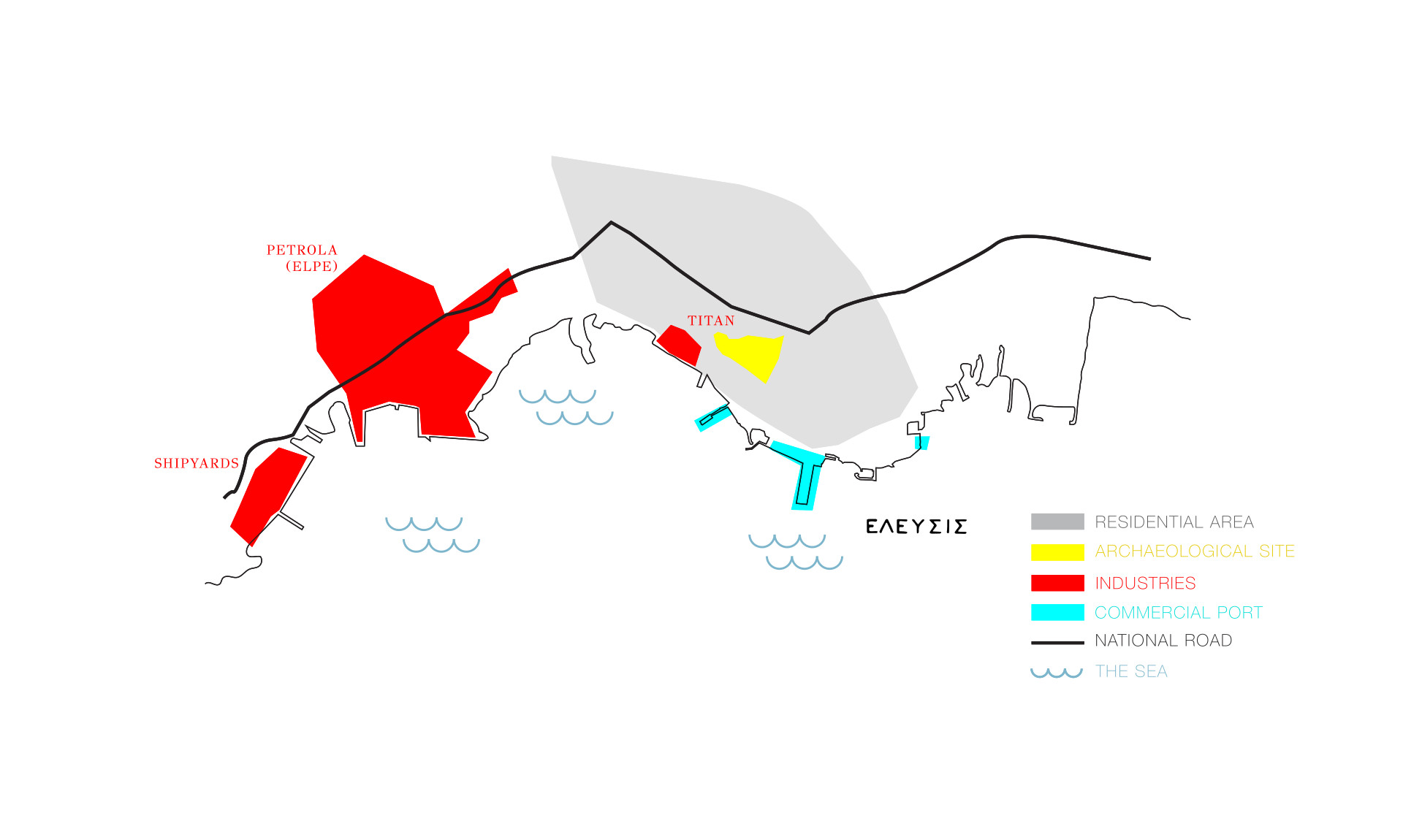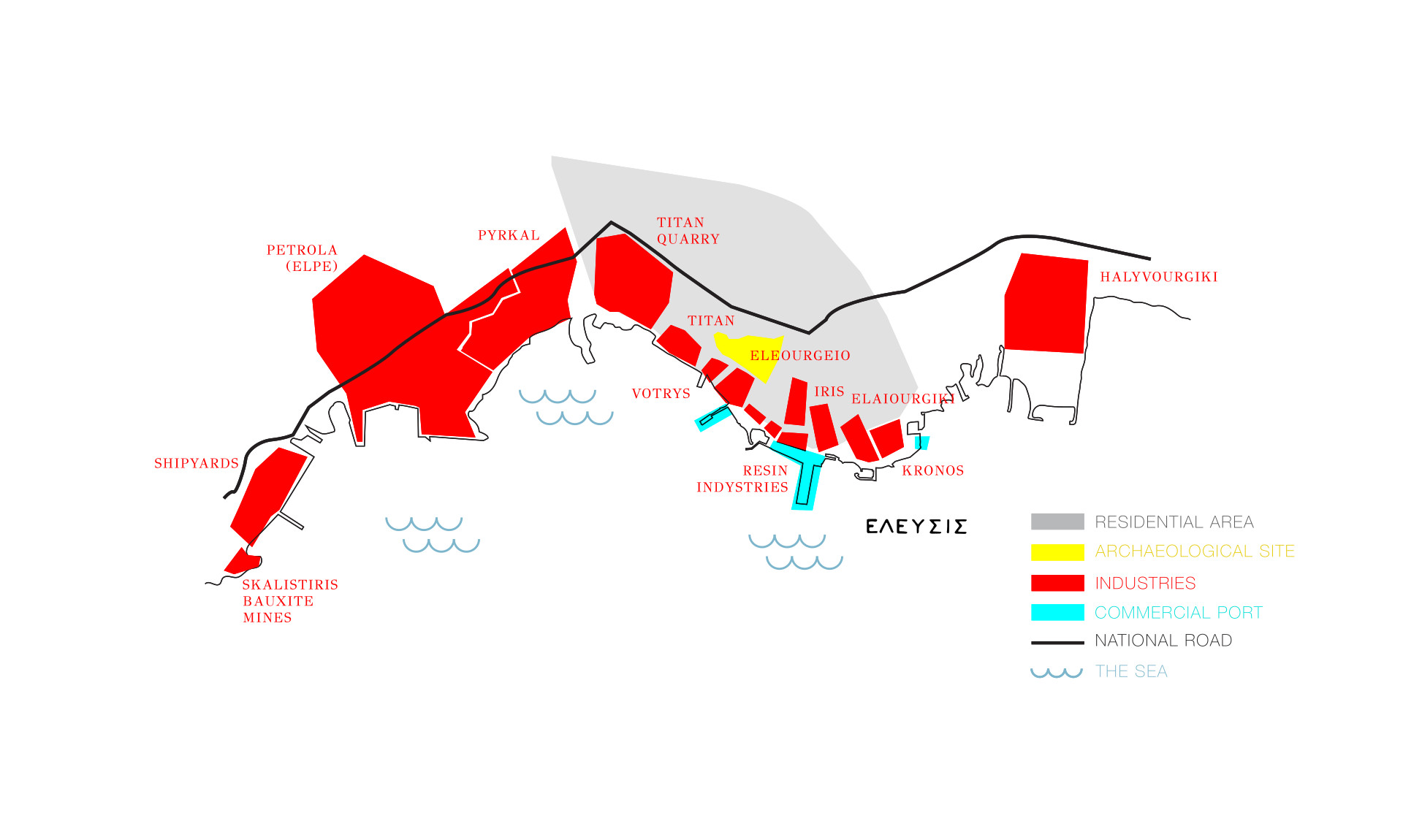THE CITY - AND THE AGE -
CONSUME THE INDUSTRY

The deindustrialization of Elefsina was neither abrupt nor comprehensive.
The operations of soap factories, ice factories, and potteries slowly ground to a halt in the late 1960s. At the same time, the larger factories occupied the area to the west and the east of the city and increased their production, creating thus a single industrial zone.
In the late 1970s, the city’s urban fabric, saturated by industries, gradually pushed factories to the outskirts of Elefsina.





The deindustrialization mainly involved Elefsina’s urban fabric, but not the wider area of the Thriasian Plain, which remains one of the Greece’s greatest industrial and transit hubs to this day, complete with industrial, storage, and transshipment facilities.
The city did not give in to desolation. It merely stood awkwardly, facing the abandoned industrial ruins breaking the continuity with its beachfront. Notwithstanding the gaps, TITAN, which nowadays supports only a small number of industrial operations mainly involving the transportation of merchandise, the ship-breaking yards at Vlycha, and the storage tanks and flaming columns of ELPE still loom dominant over the landscape.



